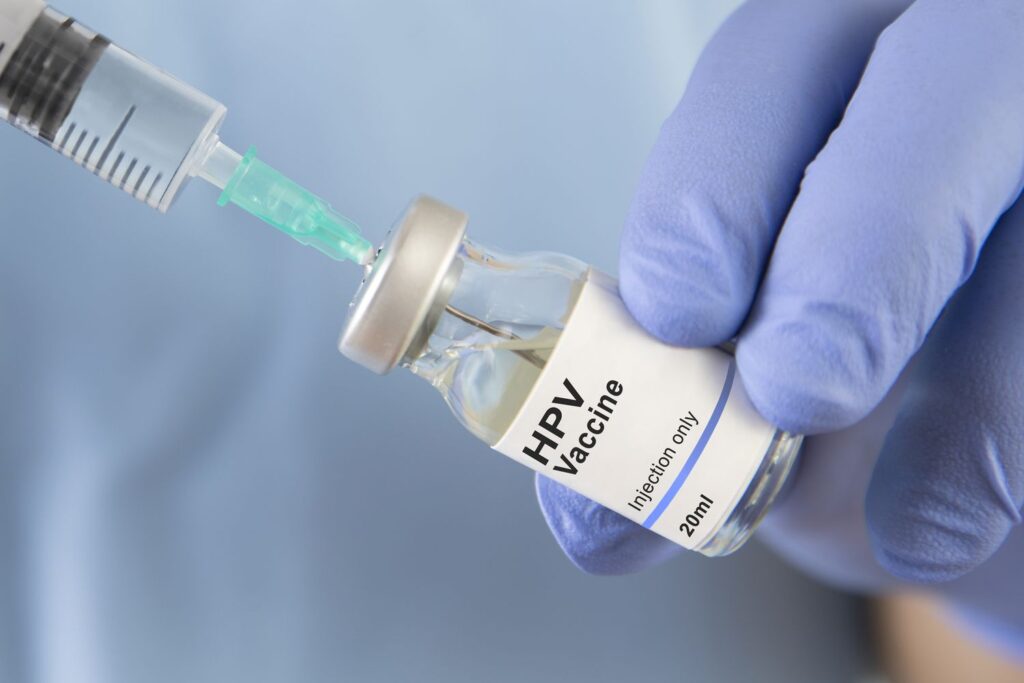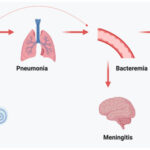Genital warts are among the most common sexually transmitted infections globally, primarily caused by low-risk human papillomavirus (HPV) types 6 and 11. These non-cancerous skin growths appear on or around the genital and anal areas and are highly contagious. Although not life-threatening, genital warts can lead to psychological distress, discomfort, and stigma.
HPV vaccination offers a highly effective method of preventing these lesions, contributing significantly to both personal and public health.

The Role of HPV Vaccines in Genital Warts Prevention
HPV vaccines are developed using virus-like particles (VLPs) that mimic the structure of the virus but do not contain viral DNA, making them non-infectious. The immune system generates neutralizing antibodies in response, providing immunity against actual HPV infection.
Key Vaccines and Their Coverage:
| Vaccine | HPV Types Covered | Primary Protection |
|---|---|---|
| Gardasil 9 | 6, 11, 16, 18, 31, 33, 45, 52, 58 | Genital warts, cervical and other cancers |
| Gardasil | 6, 11, 16, 18 | Genital warts, cervical, vulvar cancers |
| Cervarix | 16, 18 | Not effective against genital warts |
Only Gardasil and Gardasil 9 offer protection against HPV types 6 and 11—the two strains responsible for over 90% of genital warts cases.
Vaccine Effectiveness in Reducing Genital Warts Incidence
Numerous large-scale studies demonstrate the real-world effectiveness of HPV vaccines in dramatically reducing genital wart cases.
- Australia observed a 92% decline in genital warts among young women and 81% among heterosexual men within a decade of implementing the national HPV program.
- United States reported a significant drop in genital warts prevalence among vaccinated adolescents and young adults.
- Denmark and Sweden showed near elimination of genital warts in populations with high vaccine coverage.
These outcomes confirm that early immunization substantially disrupts HPV transmission and wart manifestation.
Recommended Age Groups and Vaccination Guidelines
The Centers for Disease Control and Prevention (CDC) and the World Health Organization (WHO) recommend the following for optimal HPV vaccine efficacy:
Routine Vaccination
- Target Age Group: Boys and girls aged 9–14 years
- Goal: Immunization before potential exposure through sexual activity
Catch-up Vaccination
- Age Range: Individuals up to 26 years
- Who Should Receive: Those unvaccinated or partially vaccinated
Shared Clinical Decision-Making
- Adults aged 27–45 years may benefit based on individual risk factors and physician assessment.
Vaccinating both sexes is essential in halting HPV transmission and preventing wart outbreaks in the broader population.
HPV Vaccine Dosage Schedule and Administration
Dosing varies depending on the age at first vaccination:
| Age at First Dose | Doses Required | Recommended Schedule |
|---|---|---|
| 9–14 years | 2 doses | At 0 and 6–12 months |
| 15 years and older | 3 doses | At 0, 1–2 months, and 6 months |
Proper spacing of doses is crucial to ensure maximum immune protection and long-term effectiveness.
Safety Profile and Side Effects of HPV Vaccines
HPV vaccines are among the most closely monitored immunizations in medical history. They are extensively studied, approved by FDA, EMA, and WHO, and have been administered to millions worldwide.
Common Side Effects:
- Injection site soreness
- Mild fever
- Headache or fatigue
- Nausea
Rare Adverse Reactions:
- Syncope (fainting) post-injection
- Severe allergic reaction (anaphylaxis), extremely rare
Global health agencies confirm no link between HPV vaccines and fertility issues, autoimmune conditions, or long-term health risks.
Impact of HPV Vaccination Programs on Public Health
The introduction of national HPV vaccination programs has led to profound reductions in genital warts, healthcare costs, and STD-related clinic visits.
Countries with school-based immunization initiatives, particularly for both boys and girls, demonstrate the highest declines in wart cases and virus circulation.
Integration of HPV Vaccination With STI Prevention Efforts
While the HPV vaccine effectively prevents genital warts, it should not replace other sexually transmitted infection (STI) prevention strategies, including:
- Condom use: Reduces transmission risk, though not 100% protective against HPV
- Regular STI screening: Important for sexually active individuals
- Sexual health education: Reinforces vaccine benefits and safe practices
Public health campaigns integrating HPV vaccination with STI awareness yield stronger outcomes than isolated interventions.
Addressing Vaccine Hesitancy and Increasing Coverage
Despite proven benefits, vaccine uptake is hindered by:
- Misinformation regarding safety or side effects
- Cultural taboos about adolescent sexual health
- Lack of awareness in rural or underserved areas
- Cost and accessibility barriers in some countries
Solutions:
- School-based programs with opt-out policies
- Community education led by healthcare professionals
- Subsidized vaccine access through government funding
- Targeted messaging for parents, guardians, and adolescents
Global success hinges on early intervention, public trust, and universal access.
Genital warts, though benign, pose a widespread burden in terms of emotional distress, healthcare utilization, and stigma. Vaccination against HPV types 6 and 11 using Gardasil or Gardasil 9 represents a safe, effective, and lasting solution to this issue. When administered during adolescence—preferably before sexual debut—the vaccine prevents the vast majority of genital wart cases and contributes to population-wide herd immunity.
As more countries expand vaccine access and promote early immunization across genders, the global incidence of genital warts continues to decline, setting a strong precedent for broader STD prevention efforts.

